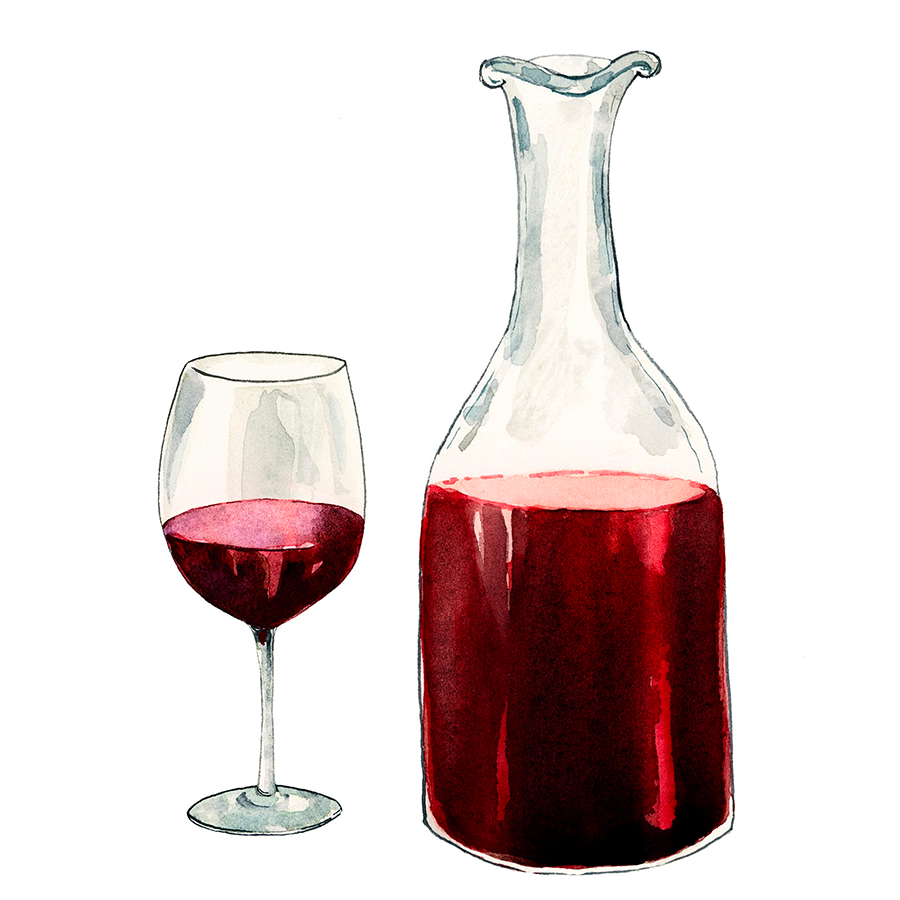The timeless charm of Claret at Christmas
Author: Issariya Morgan

Rich and warming, red Bordeaux has long been a favourite in the UK during the chilly festive season. Below, you’ll find tips and advice from our experts helping you make the most of your Christmas Claret.
Cherished traditions
In Victoria Bull’s household, the enjoyment of red Bordeaux is an undisputable part of Christmas – even if it’s the only thing everyone agrees on.
Settling down to Christmas lunch is my favourite moment of the year – especially as, owing to my own thoughtful tradition, I always place myself closest to the bread sauce. Then commences the gleeful hand-rubs, the profusive compliments to the chef, and those joyful sounds made by all who have happily decided they are about to eat well above their waistline. Christmas is built on traditions; we delight in their familiarity and celebrate their perfection – and heaven help those who tamper with them (who says you can be too old for stockings?).
Claret is one of these traditions. It gives a respectful nod to the past, best enjoyed in the present – and improved only by the promise of another bottle lying in wait, eager to be uncorked.
For Christmas, it is perfect: a wine that deserves to be poured generously into hopeful, outstretched glasses; or, taken off to be sipped pensively in a moment of rapturous solitude. Claret’s delicate spice, firm structure and sensitive tannins beautifully complement the rich array of flavours heaving upon our tables. The inviting fresh fruit aromas instantly please us, while its savoury notes and complexity are there to thrill the more vinous. Most importantly, its moreish character powers us through our most eloquent of family debates. And if Claret ends up being the only thing we can all agree on, then long may this tradition last.
How to decant red Bordeaux
The act of decanting Claret is crucial to the enjoyment of Clarets of certain ages. Tom Cave gives us a handy overview of which Clarets to decant, and how.
In years gone by, all Bordeaux would have been decanted – if fortunate enough – by your butler in his pantry and brought through to your dining room. Hence there was little need for the wonderful array of labels on bottles we enjoy today. This is the very reason why Berry Bros. & Rudd bottlings had such a neat and concise, if plain, label: the owner never really saw the bottle.
There are two main reasons to decant red Bordeaux. If it’s a young wine with robust tannins, the act of decanting allows the wine to breathe and open out. Typically, for any vintage since 2000, you might decant an hour before serving, and longer for younger wines.
The other principal reason to decant is associated with older, more mature wines. Pour these gently through a funnel with gauze. This prevents any larger particles, like those from a crumbly cork (as well as finer sediment, which is best left in the bottle), from entering the decanter, and in due course, your glass. Timing very much depends on the age of the wine. For a good-grade wine from the 1990s, I would decant an hour or so before serving. For something very much older, I might decant minutes before pouring.
“Double-decanting” is a handy option. This means emptying a bottle, rinsing it well with un-tainted water, and returning the wine to that same bottle. However, in my mind, the gorgeous colour of a red Bordeaux in a decanter – whether a more vivid hue or pale brick – is a wonderful sight on any table, hence the fine array of Victorian Claret jugs to be found.
A final word: do check any decanter or vessel (really, it needn’t be finest crystal – any jug will do) is clean before pouring your precious wine into it. Standing the bottle up for at least 12 hours before decanting, so that any fine sediment can settle, is also sensible.
Oh, and when you come to clean the decanter the following morning – perhaps a little dazed from the festive indulgence – take care not to chip it on the tap (we’ve all done it.)
How to match red Bordeaux with food
Red Bordeaux pairs beautifully with many savoury dishes. Henrietta Gullifer offers a few tips for finding the perfect festive food match.
Claret and Christmas go effortlessly together. For many, red Bordeaux is the ultimate winter wine: a warming, rich style that goes well with classic seasonal dishes, such as braised or roasted meats, savoury risottos and hearty stews. It’s also a celebratory wine, with some wines laid down for decades until they’re perfectly ready for the Christmas table.
Red Bordeaux has a high tannin content which not only brings colour and texture, but also enables it to age for long periods of time. These can seem rough when drinking the wine on its own, but when protein binds with these tannins it softens them, bringing out flavour and creating a velvety texture. Therefore, when I’m drinking Claret, I always turn to high protein, savoury dishes. Anything from a nut roast to Christmas goose will pair well – as long as the Claret doesn’t overpower the flavours in the food.
A younger, fruitier Bordeaux will go wonderfully with lighter flavours – perhaps even a meatier fish or turkey. On the other hand, a mature Claret will balance the more gamey elements of goose or roast beef. Personally, I will find a place for both styles over the festive season.
This article is an excerpt from a larger collection of writing, which can be found here. Alternatively, explore our selection of Christmas Clarets here.


